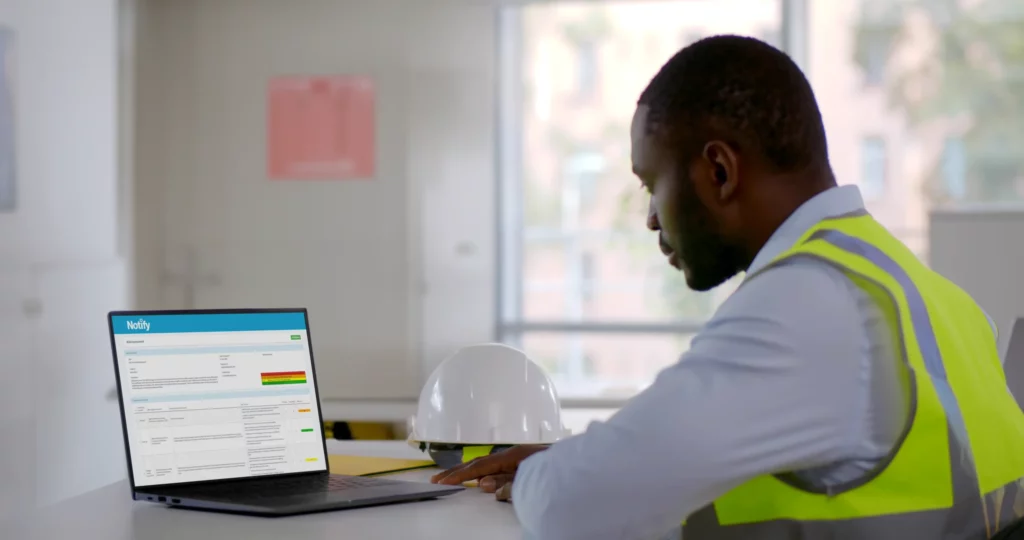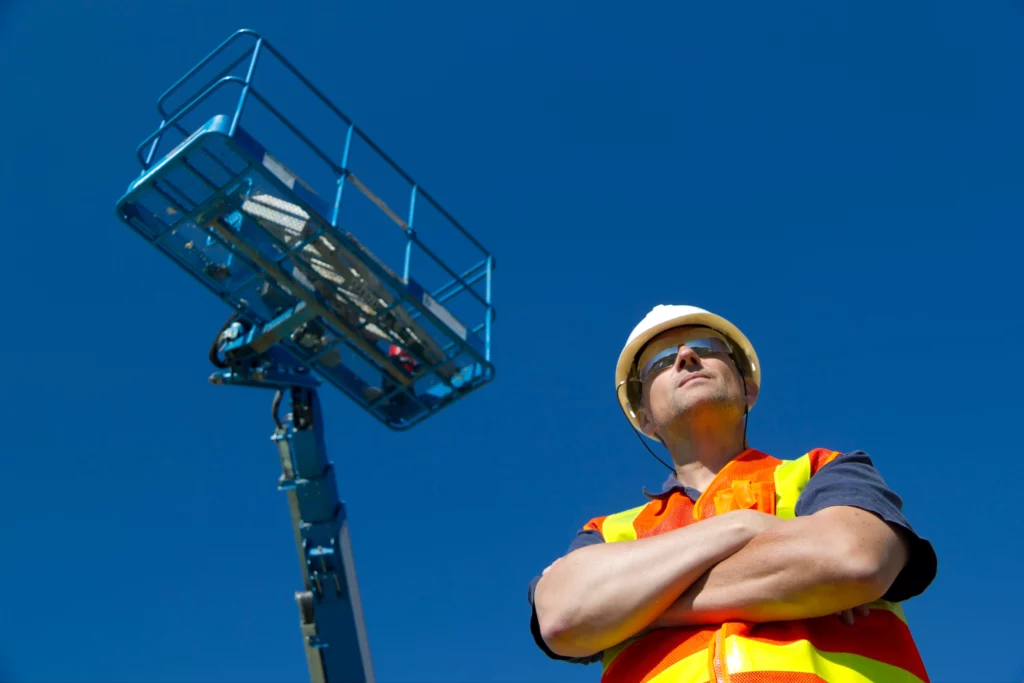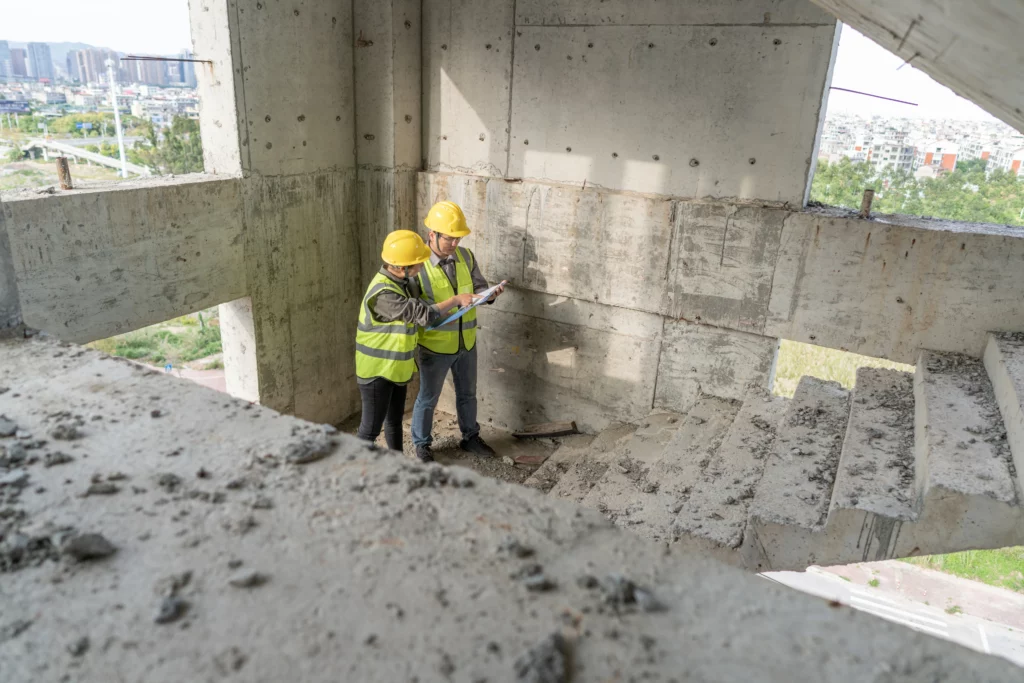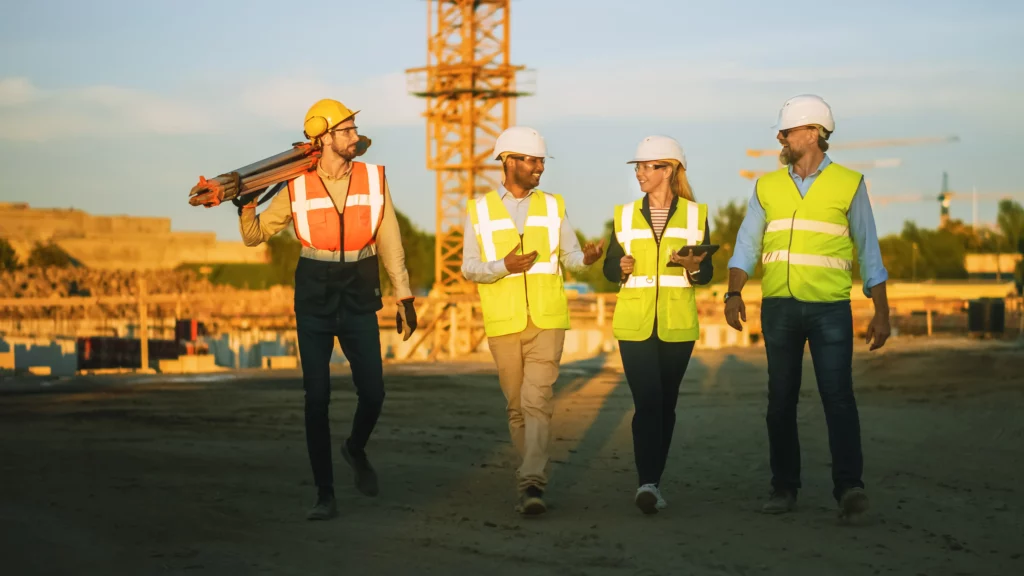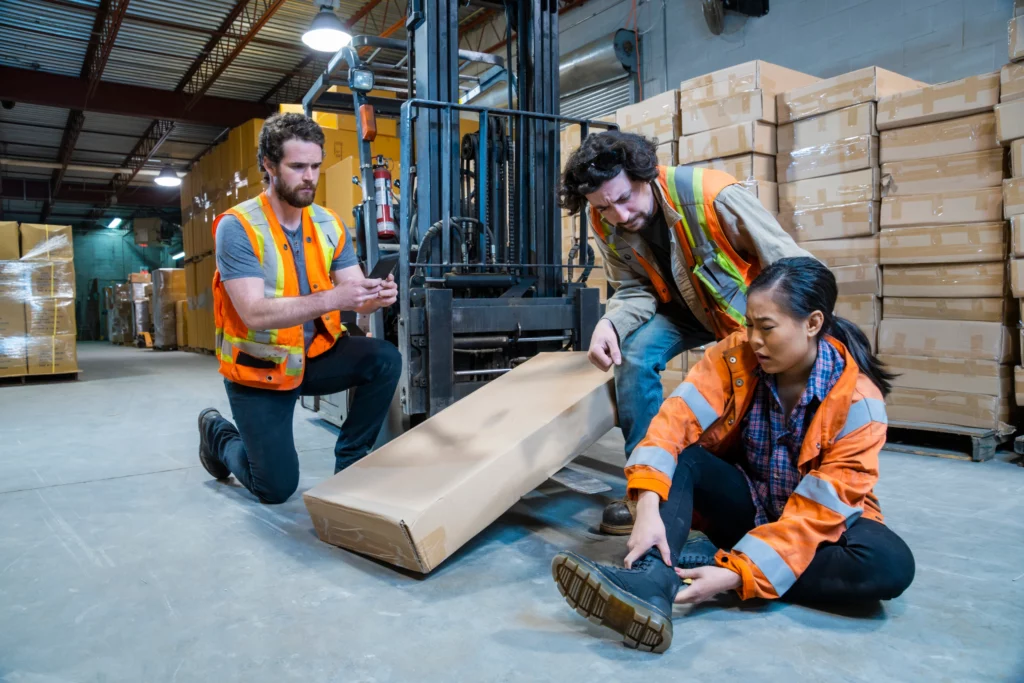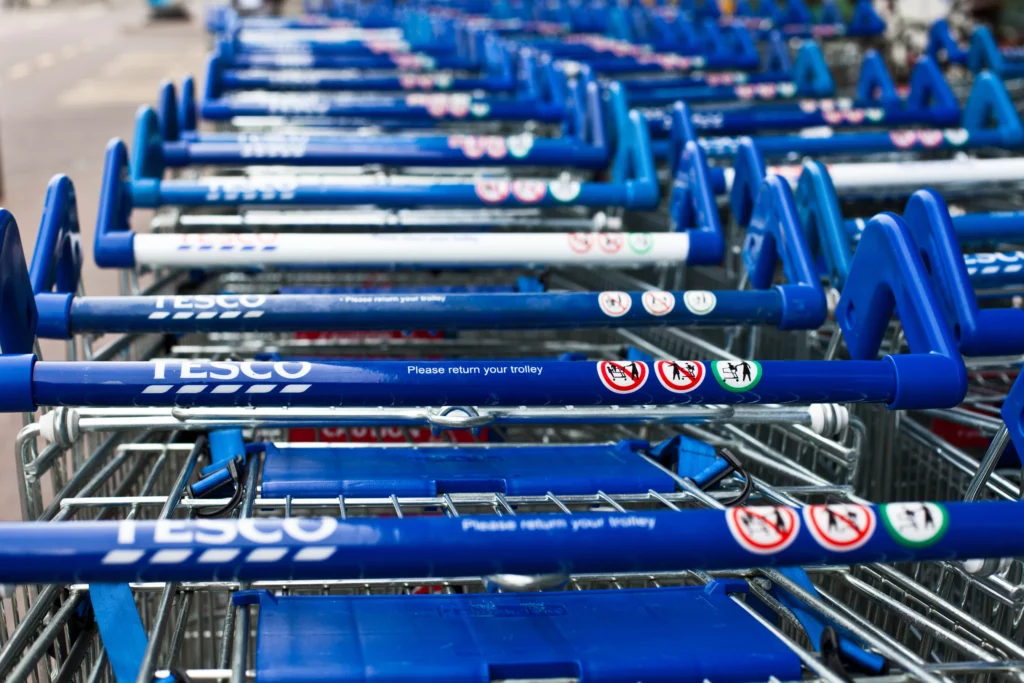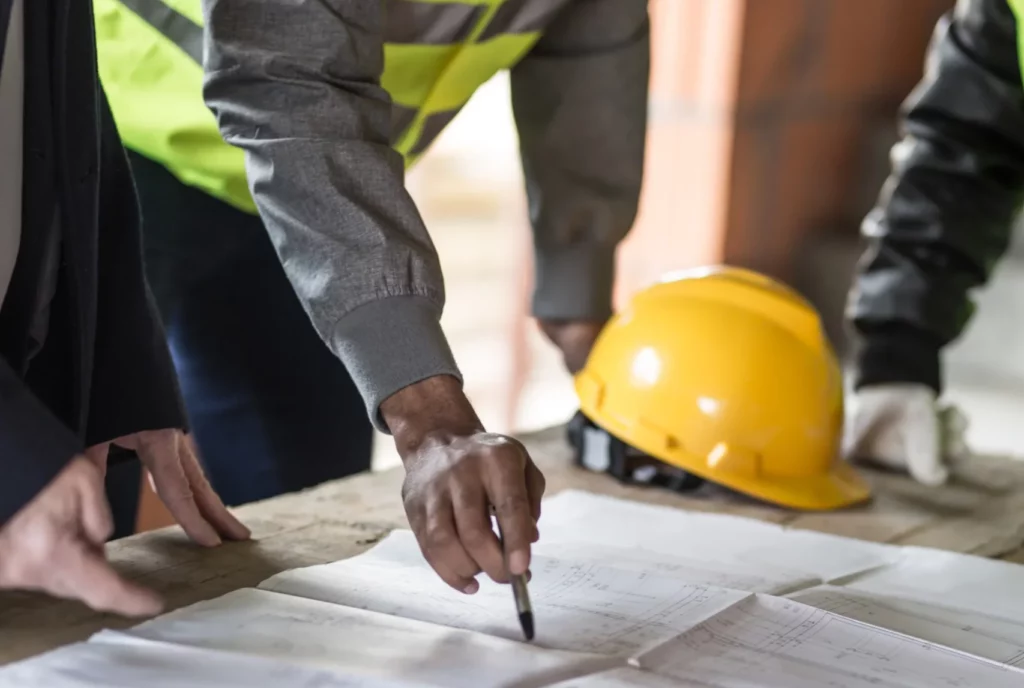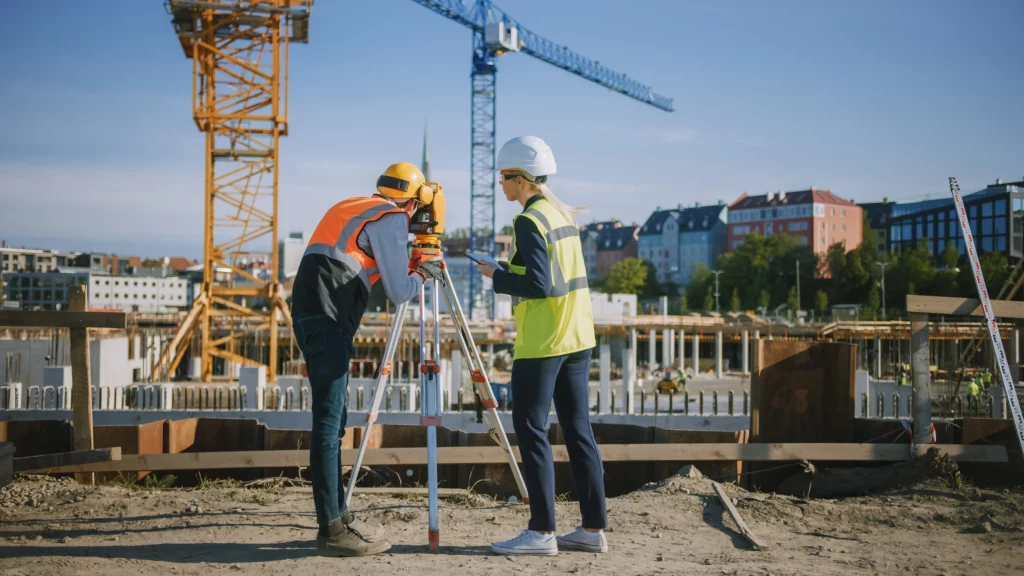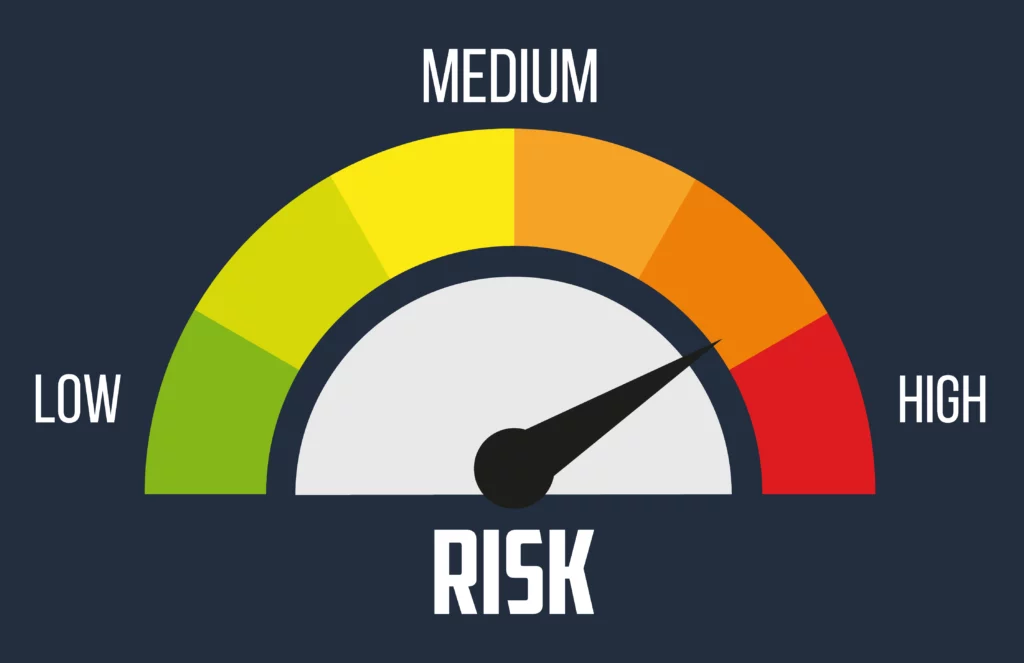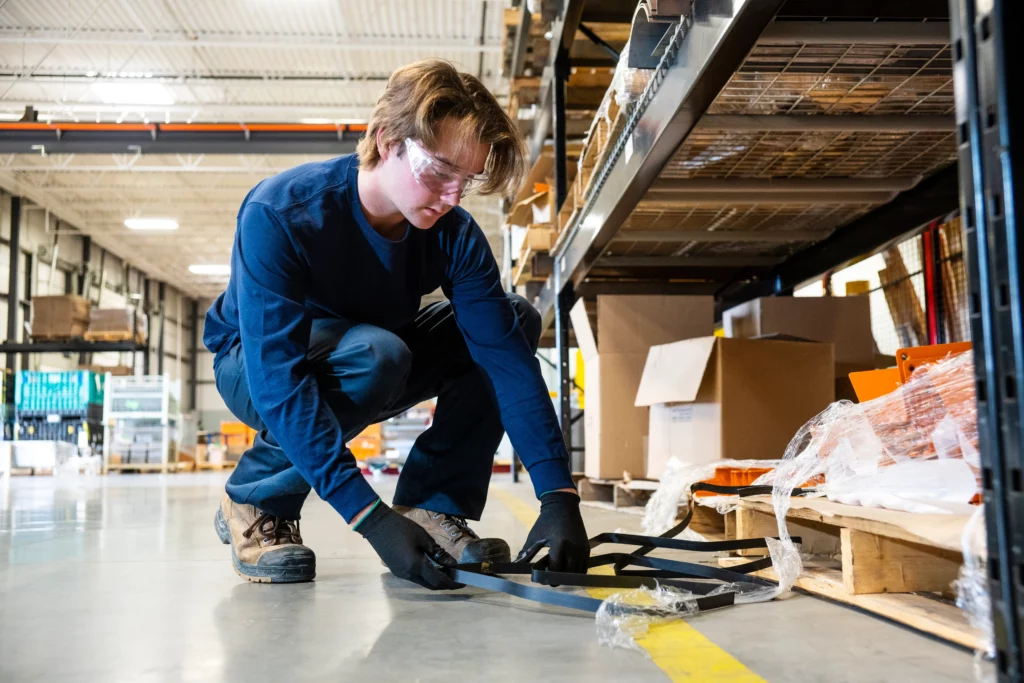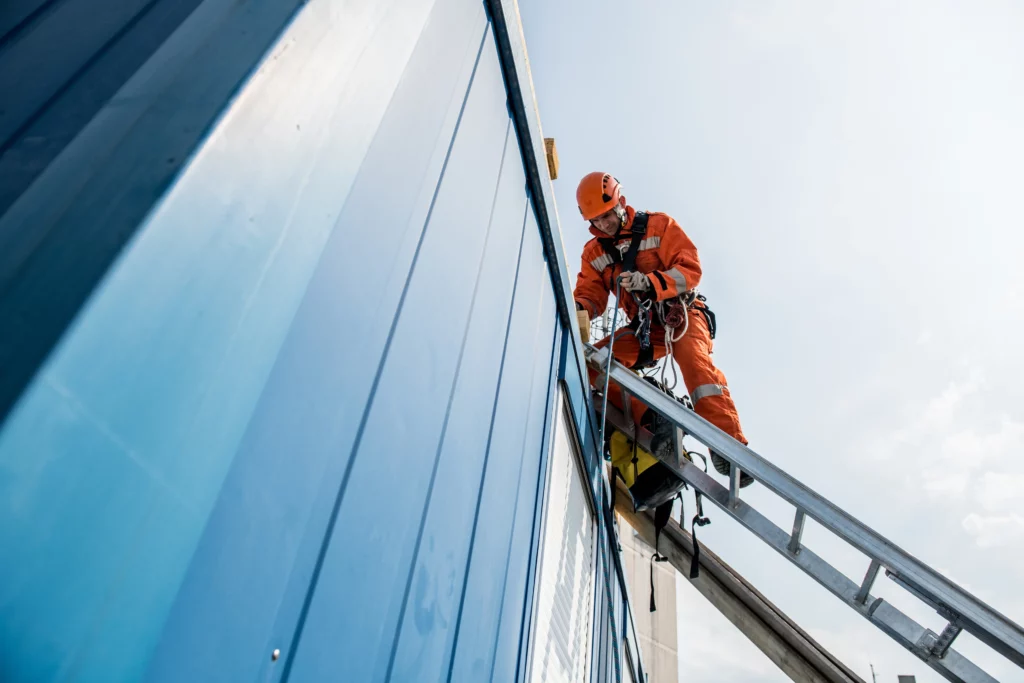Welcome to the fifth blog, talking about how we can improve health and safety on construction sites. This last blog in our 5-part series, sets out guidance for employers on the prevention of common injuries when working in the construction industry.
Organisations can only effectively prevent common injuries, if they can identify those that have occurred within their own organisation. By reporting near-misses and investigating incidents, you can create an accident prevention programme focused on common causes of injuries. This is the most important element of any accident reduction programme.
What are the most common injuries in the construction sector?
The HSE releases a yearly report in October with accident stats for all sectors in Great Britain: Health and safety statistics (hse.gov.uk)
Please note this only has statistics from reported RIDDOR events (Injuries, diseases, and dangerous occurrences) to the HSE.

The construction industry statistics for RIDDOR events from April 2021 to April 2022 show the following for fatal and non-fatal injuries:
- Fatal Injuries – Falls from a height were the most common injuries followed by trapped by something collapsing or overturning.
- Non-Fatal Injuries – Slips/trips/falls (same height) were the most common injuries followed by manual handling.
The HSE data is only a starting point for employers when implementing an accident reduction programme. Employers must ensure that they collect and analyse all accident/incident data across their own operations. This will give a better understanding of what’s happening in each department and help create a successful accident reduction strategy.
More and more organisations within the construction sector are now benefiting from using digitalised incident reporting software. This software allows employees and contractors to report incidents from anywhere, and it allows managers/supervisors to close the incident investigation feedback loop. Our previous blog about using technology to make construction sites safer provides more advantages.
To prevent accidents, organisations should review their own data on reported accidents, incidents, and near misses. Examples are provided below. They will ensure the implementation of the correct and specific injury prevention measures across their organisation. Furthermore, this data should be constantly monitored to ensure that the prevention measures previously introduced remain specific, and in line with the current common injuries reported.
What actions can we take to reduce/prevent injuries in construction?
To mitigate and prevent injuries in the construction industry, there are several steps that can be taken. Comprehensive training, regular safety audits, adequate PPE and technology such as health and safety software can all help to reduce accidents in the workplace.
This guide will discuss how to prevent common construction safety hazards, according to the HSE.
Working at height (accounts for 51% of all fatal injuries within construction)
If working at height cannot be avoided, then the hierarchy of safety controls must be introduced through your risk management process:
- Avoid working at height where it’s reasonably practicable to do so.
- When you can’t eliminate the risk, use the right equipment to reduce the distance and impact of a fall.
- Only use ladders and stepladders for low risk, short duration work
- Ensure that all staff working at height have received adequate training.
- All working at height operations must be monitored and supervised by a competent person (SMSTS/SSSTS)
 Plant operations/vehicle movement (accounts for 18% of all fatal injuries within construction)
Plant operations/vehicle movement (accounts for 18% of all fatal injuries within construction)
We must control and monitor all vehicle and plant movement on construction sites:
- Ensure an agreed traffic management plan (including site rules) is in place. It should avoid vehicles having to reverse if possible.
- Vehicle movement safely segregates pedestrians.
- If vehicles need to reverse, use trained banksmen or have a separate area for reversing that is away from pedestrians.
- Ensure that all operators/drivers are qualified and authorised.
- Carry out inspections and maintenance (where required) on all vehicles/plant equipment (we always recommend daily pre-use checks).
- Report any vehicle/plant equipment faults and quarantine them until completing the repairs.
Slips/trips and fall (STF) Injuries – same level (accounts for 26% of all non-fatal injuries within construction)
Slips, trips and falls account for a quarter of all non-fatal injuries on construction sites. Most companies’ accident data shows that slips, trips, and falls cause the majority of non-fatal injuries. Practice the following prevention measures to minimise the risk:
- Make sure the site is clean and organised to prevent materials and waste from piling up. Allocating storage areas will help maintain order on site.
- All staff should have safety shoes with anti-slip, mid sole, toe, and ankle protection.
- Identify and remove all possible STF hazards. If this is not possible, introduce safety control measures as part of risk management process. Hazards include:
- Trailing cables
- Uneven surfaces
- Wet/icy surfaces
- Changes in levels (steps)
- All staff should conduct STF training to highlight the hazards and controls.
Manual handling injuries (accounts for 18% of all non-fatal injuries within construction)
In construction, manual handling injuries are a big risk because most tasks need physical effort. Practice the following prevention measures.
- If possible, avoid manual handling activities by automation and mechanical lifting aids.
- All staff should attend annual manual handling training specific to the activity that they are undertaking.
- All manual handling tasks should have assessments done using the industry standard T.I.L.E method (Task, Individual, Load, Environment).
Behavioural safety/unsafe Acts (poor safety behaviour accounts for around 88% of all injuries)
Unsafe acts cause about 88% of injuries in construction. An unsafe act is a human error or personal mistake that deviates from the established safe system of work.
Examples:
- Failure to use personal protective equipment (PPE)
- Taking shortcuts to finish the work sooner than expected
- Bypass or removal of safety devices
- Using improper tools/equipment
- Carrying out works without authorisation or an agreed safe system of works
- Removal of edge protection to carry out works
- Carrying out an activity without the necessary training
- Horseplay
Organisations should categorise and analyse their accident, incident, near miss, and hazard data. It is crucial for them to identify common causes and determine if the root cause was because of an unsafe act. This will assist with their prevention strategy going forward. If unsafe acts are the main cause of their accidents, then a Behavioural Safety Training course should be implemented.
So what is a Behavioural Safety Training?
Behavioural Safety Training is designed to modify people’s Behaviour, leading to an improved safety culture, ensuring that everybody goes home safe and healthy.
Summary
The key topics above emphasise the significance of reporting near-misses and investigating incidents to create effective accident prevention programmes in the construction sector.
Whilst it’s important to review the most common injuries in the sector, employers are urged to go beyond HSE data, by collecting and analysing their own accident and incident data to tailor injury prevention measures to their specific operations. To reduce and prevent injuries, steps such as comprehensive training, safety audits, PPE usage, and technology adoption, such as health and safety software, are recommended.
Specific safety measures for addressing common construction hazards, including working at height, plant operations/vehicle movement, slips/trips and falls, manual handling, and addressing unsafe acts through behavioural safety training should be identified and implemented prior to any work commencing. By applying these insights, organisations in the construction sector can make significant strides in improving safety on their worksites.
Previous blogs in this series covering health and safety in the construction industry are as follows:
- Blog 1 – Why is Health and Safety important in construction?
- Blog 2 – What are method statements in construction?
- Blog 3 – How to create a positive safety culture in the construction industry?
- Blog 4 – Technology solutions for improving safety on construction sites.
References Used:
Health and safety statistics (hse.gov.uk)
Introduction to working at height safely – HSE
Construction – Traffic management on construction sites (hse.gov.uk)
Construction – Slips, trips and falls industry health & safety (hse.gov.uk)
Manual handling at work – Musculoskeletal disorders – HSE
Full manual handling risk assessment: Examples of assessment checklists (hse.gov.uk)
Human factors: Behavioural safety approaches – an introduction (hse.gov.uk)












